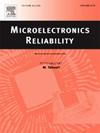Accurate and efficient simulation of PCB warpage during manufacturing processes using partitioned equivalent model
IF 1.9
4区 工程技术
Q3 ENGINEERING, ELECTRICAL & ELECTRONIC
引用次数: 0
Abstract
During the complex manufacturing processes of printed circuit boards (PCBs), residual stresses inevitably accumulate, leading to warpage and stress concentration that can damage solder joints and interfaces, ultimately compromising the long-term reliability of electronic systems. To address these issues, this study proposes a partitioned equivalent model based on the multiscale finite element method, and comprehensively simulates the effects of lamination, etching and surface treatments (hot air solder leveling and solder mask coating) on PCB warpage. A key feature of this model is the integration of a post-processing strategy, which uses the correlation between copper content and coating thickness of the surface wiring layer to improve the prediction accuracy of PCB surface flatness and warpage. Additionally, the model incorporates specific boundary conditions for each wiring layer to more accurately calculate the equivalent material properties, under realistic manufacturing conditions. The multiscale simulation results are compared with the warpage and displacement curves obtained from both the shadow Moiré experiments and the finite element model with fully detailed wiring. The comparisons reveal a high level of agreement in warpage morphology, with the accuracy for warpage values of the partitioned equivalent model after surface treatments exceeding 75 %. Besides, this model shows significant advantages in computational efficiency, with simulation time reduced by up to 80 % compared to the fully detailed wiring model. Therefore, the proposed modeling approach can serve as an effective tool for optimizing PCB manufacturing processes, structural designs, and material selection, thereby enhancing the reliability and performance of electronic products.
利用分段等效模型精确、高效地模拟PCB制造过程中的翘曲
在印刷电路板(pcb)的复杂制造过程中,残余应力不可避免地积累,导致翘曲和应力集中,从而损坏焊点和接口,最终损害电子系统的长期可靠性。为了解决这些问题,本研究提出了一个基于多尺度有限元方法的分区等效模型,并综合模拟了层压、蚀刻和表面处理(热风焊料找平和阻焊涂层)对PCB翘曲的影响。该模型的一个关键特点是集成了后处理策略,利用铜含量与表面布线层涂层厚度之间的相关性来提高PCB表面平整度和翘曲度的预测精度。此外,该模型还结合了每个布线层的特定边界条件,以便在实际制造条件下更准确地计算等效材料性能。将多尺度模拟结果与阴影莫尔实验和完全详细布线的有限元模型得到的翘曲和位移曲线进行了比较。比较表明翘曲形态高度一致,表面处理后的分割等效模型的翘曲值精度超过75%。此外,该模型在计算效率方面具有显着优势,与完全详细的布线模型相比,仿真时间减少了80%。因此,所提出的建模方法可以作为优化PCB制造工艺、结构设计和材料选择的有效工具,从而提高电子产品的可靠性和性能。
本文章由计算机程序翻译,如有差异,请以英文原文为准。
求助全文
约1分钟内获得全文
求助全文
来源期刊

Microelectronics Reliability
工程技术-工程:电子与电气
CiteScore
3.30
自引率
12.50%
发文量
342
审稿时长
68 days
期刊介绍:
Microelectronics Reliability, is dedicated to disseminating the latest research results and related information on the reliability of microelectronic devices, circuits and systems, from materials, process and manufacturing, to design, testing and operation. The coverage of the journal includes the following topics: measurement, understanding and analysis; evaluation and prediction; modelling and simulation; methodologies and mitigation. Papers which combine reliability with other important areas of microelectronics engineering, such as design, fabrication, integration, testing, and field operation will also be welcome, and practical papers reporting case studies in the field and specific application domains are particularly encouraged.
Most accepted papers will be published as Research Papers, describing significant advances and completed work. Papers reviewing important developing topics of general interest may be accepted for publication as Review Papers. Urgent communications of a more preliminary nature and short reports on completed practical work of current interest may be considered for publication as Research Notes. All contributions are subject to peer review by leading experts in the field.
 求助内容:
求助内容: 应助结果提醒方式:
应助结果提醒方式:


